Developer: NEC Publisher: NEC Released: 1990 Genre: Action
Space Harrier was insanely popular in the arcade in the 80s. It is easy to see why, with its fancy Super Scaler tech and art direction. While it was common for popular arcade games to receive home ports Space Harrier was an interesting case. The tech used was far above any home console at the time but that did not stop the conversions. It came out for everything, including platforms it had no business being on. Surprisingly the Famicom also saw a version; Sega wanted a piece of that yen. The Turbo Grafx-16 turned out better than most and is a solid conversion of the arcade game.
How does this version stack up to the arcade? Pretty well actually. The most glaring differences are the resolution and the checkerboard pattern of the ground. This has been replaced by horizontal lines which sadly look ugly. The resolution is lower which has resulted in smaller sprites as well. The scaling is not as smooth obviously but still looks good in motion. Most importantly the insane speed of the arcade game is intact. The game tosses around a lot of sprites for the system without any slowdown, which is impressive. This port was one of the best at the time of its release.
Space Harrier is a simple game at heart. As a rail shooter you have free reign to fly around the screen to shoot enemies and dodge obstacles and enemies. There are no power-ups, just hold the trigger and go. The speed of the game is insane, forcing you to stay on the move at all times. For the most part Space Harrier was made to rack up high scores and frequent enemy waves and such facilitate that. That constant focus on action helps to distract from the simple gameplay. As long as you know what you are in for the game is still enjoyable despite its simplicity.
Although the game is simple it does begin to evolve as you progress. The levels are not as populated as the arcade but are still pretty intense. The enemy waves are erratic and incredibly aggressive from the start and become more accurate the deeper you progress. You can run along the ground and destroy most objects initially. Soon however the obstacles become indestructible. Where running and destroying bushes to avoid jets might have been a viable strategy before becomes moot when you have dozens of massive boulders and weird alien towers coming at lightning speed. The only respite comes in the two bonus stages in stage five and twelve that see you crash into everything for points on the back of a dragon.
Space Harrier’s arcade roots show in its high difficulty. The choppy scaling makes dodging enemy fire difficult from the start. The game’s speed, while impressive, does not allow for a lot of nuance as you spend all of your time being reactive. By the midpoint you will spend all of your time moving in a constant circle as there is no safe space. Boss battles are even worse; trying to dodge their fire and shoot them down is harder than it should be. The biggest reason the game is hard is that there are no continues, passwords, or even extra lives. That last one is the most egregious. You spend so much time racking up points and it means nothing outside of bragging rights. I can respect the dedication to the arcade experience but this is one of those times where a concession for home players should have been made.
For an arcade game Space Harrier is pretty long at eighteen levels. The weird art direction allows the designers to throw in all manner of weird creature without it making sense. There are robots, one eyed elephants, two-headed dragons, and floating heads aplenty in all of the fantastical worlds you visit. I suppose the fact that you are visiting alien worlds is the reason you never question it. It goes a long way toward keeping your interest although by the midpoint the game starts to repeat itself. The bosses begin to repeat and even standard enemies become bosses.
In Closing
The Turbo Grafx-16 version of Space Harrier is ugly but serviceable. How much you will enjoy it depends on your tolerance for arcade gameplay. While impressive it can’t stand up to the system’s better shooters


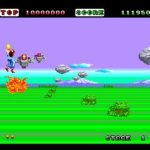
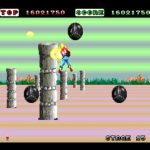
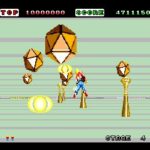

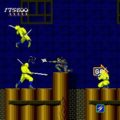


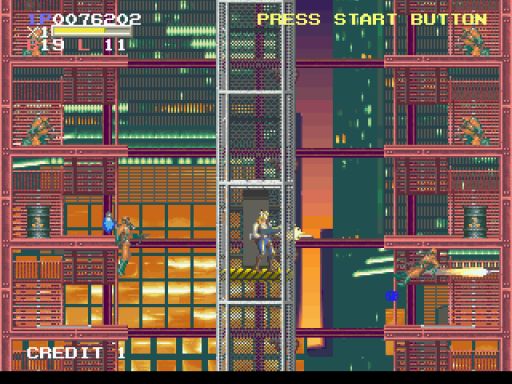
One thought on “Space Harrier”